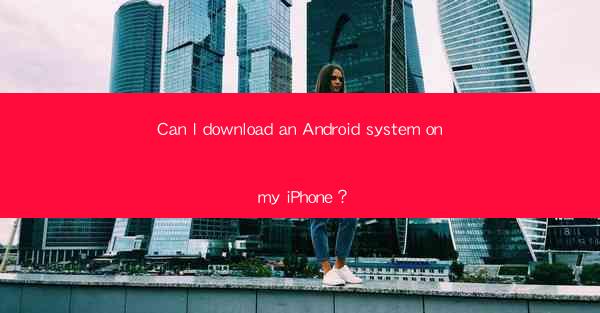
The question of whether you can download an Android system on your iPhone is a common one among users who are looking to switch platforms or explore alternative operating systems. While Apple's iOS is known for its seamless integration and user-friendly interface, Android offers a different set of features and customization options. However, the compatibility between the two systems is limited, and the answer to this question is not straightforward.
Understanding the Hardware Differences
One of the primary reasons why you cannot directly download an Android system on your iPhone is the hardware differences. Android is designed to run on a wide range of hardware, from budget smartphones to high-end flagships. On the other hand, iOS is specifically designed to run on Apple's hardware, which means that the underlying architecture and components are optimized for Apple's devices. This hardware-specific optimization makes it impossible to run Android on an iPhone without significant modifications.
Operating System Architecture
Another key factor is the architecture of the operating systems. Android is based on the Linux kernel, while iOS is based on a modified version of the Darwin kernel, which is a Unix-like operating system. This fundamental difference in the kernel architecture means that the two systems are not compatible with each other. The software and drivers that Android relies on are not designed to work with Apple's hardware, and vice versa.
Apple's Closed Ecosystem
Apple has always maintained a closed ecosystem, where the hardware, software, and services are tightly integrated. This approach ensures a high level of security and a consistent user experience. However, it also means that third-party developers and users have limited control over the operating system. Apple's strict control over the App Store and the distribution of software further restricts the possibility of running Android on an iPhone.
Modifying the iPhone
Despite the challenges, some users have attempted to modify their iPhones to run Android. This process, known as jailbreaking, involves bypassing Apple's security measures to gain root access to the device. Once jailbroken, users can install third-party apps and modify the operating system to some extent. However, even with a jailbroken iPhone, running a full Android system is not feasible due to the hardware and software incompatibilities mentioned earlier.
Emulators and Virtual Machines
For those who are determined to experience Android on their iPhone, there are alternative solutions such as emulators and virtual machines. An emulator is a software program that mimics the behavior of another system, allowing you to run Android apps on your iPhone. Virtual machines, on the other hand, create a separate environment on your iPhone where you can install and run Android. While these solutions can provide a limited Android experience, they are not as seamless or efficient as running Android directly on a compatible device.
Conclusion
In conclusion, the answer to the question of whether you can download an Android system on your iPhone is a resounding no. The hardware, software, and ecosystem differences between the two platforms make it impossible to run Android natively on an iPhone. While there are workarounds like emulators and virtual machines, they do not provide a full Android experience and are not recommended for most users. If you are looking to switch to Android, it is best to purchase a device that is designed to run the Android operating system.











